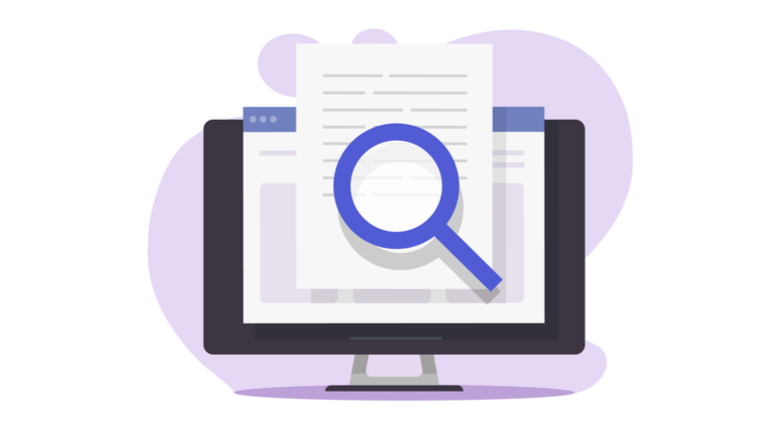Consistency matters in proposals. Inconsistencies in text signal to your readers a poor planning process, rushed writing and a lack of attention on the part of the bidding team. They can also lead to ambiguity and confusion, reflecting on your organization and the work or service you are proposing. Consistency and grammatical diligence are essential for your readers to understand your proposal and to form a positive impression of your business.
But a proposal typically has multiple contributors, who, naturally, all write differently. It’s easy for a document to become a mess of inconsistencies driven by personal preferences. It’s often a huge and painstaking task to pull these contributions into a document that speaks with one voice. Even then, each new reviewer may “correct” the document, putting inconsistencies back in. If you just winced, it’s probably time to think about setting up a style guide for your team. If you already have one, consider updating it and getting your team to take part in that process.
Knowing What to Check
Team members often have conflicting ideas about points of grammar and style, so you need a way to quickly and consistently resolve disagreements about spelling, commas, hyphens, capitalization and other challenges thrown up by the English language.
Here are some common situations where differences occur (content warning — these may make you wince again):
- Headline capitalization: Should you use title case, sentence case or vary, depending on the situation?
- Punctuation: Where do you stand on the Oxford comma? Should you use the percent symbol or write it out? What about hyphens and dashes?
- Numbers: Do you spell a number or use a figure? Does this depend on how you use the number? What about handling dates, ages and time?
- Compound words: Can you keep up with the changes in recommendations for these? For example, “healthcare” vs. “health care.”
- Abbreviations and acronyms: Should you use a state abbreviation or spell it out? In an initialism such as “U.S.,” do you use periods?
- Formatting: Do you italicize book titles or use quotation marks around them? What are your organization’s preferences for formatting bulleted lists?
- Technology words: Are you keeping up with common usage, or do your proposals look like they were written in the ’90s, with hyphens in words such as “e-mail” and capitalization of words such as “Internet”?
- Brand names: Will you use camel case for “FedEx”? All caps for “USA TODAY”? When writing proposals, it’s essential that you get product names right.
- Diversity and inclusion: Are you sure that the terms you are using are respectful and inclusive, or could they be outdated and offensive?
A style guide resolves these disputes. And remember: By style guide, we mean an editorial style guide, which is different from a brand or visual style guide. A style guide replaces personal preference with an agreed standard. It ensures consistency across your organization.
Five Steps to Improve Your Proposal Style Guide
1. Work as a team.
If you are going to embark on the mission of fixing your style guide, you need trusted companions to come with you. Set up a working group to help you with this task. It will provide moral support and increase the buy-in to the project from the outset.
2. Pick an existing guide as your reference.
There is no need to completely invent a style guide from scratch. There are some great manuals already out there, such as The Chicago Manual of Style. Pick one, reference it and then you don’t need to re-create its contents because you can simply refer to it.
3. Plan to continuously improve as disagreements come up.
Those things that made you wince above? They’re a great starting point, but that list isn’t definitive. You can start with those decisions, but make a plan to keep adding to the guide as more disagreements come up.
4. Accommodate your buyers’ preferences.
Keep track of important differences in your buyers’ style preferences. If you produce bids for both the Army and the Navy, then you know that there are differences in terminology. But when you’re under pressure, it’s easy to forget those differences. Record them in your style guide. The same is true in health care proposals where different states use different terms for the same concept, and for international clients, where you need to make sure you use the right local terms. Get your team to think of the key differences that apply in your sector and for your most important potential clients.
5. Automate wherever possible.
Using automation tools to assist with repetitive tasks such as checking whether a word should be hyphenated, closed or open, frees up writers to focus on their proposal strategy and winning messages. Put simply, it increases your chances of winning the bid. Proofreading software searches your proposal for hard-to-spot errors, such as inconsistent acronym definitions or capitalization and spelling of industry-specific terms. It can also be customized with different styles for each client and your company proposal style. This year, the Chicago Manual of Style has been built into proofreading software for the first time, representing a big step forward in the way we can work with style manuals.
Getting Buy-In
One of the risks is that you form the working group, spend many months building a comprehensive style guide, finally release it with a fanfare and a company-wide email — and nothing happens. For a style guide to be successful, it must get buy-in, both at a management/corporate level and from all those who are going to be using it. It’s important to get people invested from the start. The more involved everyone feels in a project, the more they are likely to invest in it.
Early engagement also helps to lessen fear of change. Encourage everyone to have a say in its creation. Invite ideas and suggestions, ask people about their preferences and issues they are experiencing, and hold an open brainstorming session. You won’t be able to accommodate all suggestions. In the case of disagreements, it’s important to discuss them diplomatically and give reasons for decisions. This ensures people feel heard and understood.
Enthusiastic buy-in and support from managers is often critical. Ensure that you communicate the rationale and scope of the project. Then, clearly identify the benefits of having a style guide for the organization. How much time is lost correcting errors that could be used more productively?
Bring in your social media and customer service teams for unique user insight that you can build into the core of your guide, alongside writers and editors for their ability to craft content. And have fun with it. Use a human voice, rather than robot speak, and don’t be afraid to incorporate humor.
Once your guide is complete, think carefully about how you distribute it. Do you print copies and supply these to new employees? Do you host your style guide on your company’s intranet or on a wiki? The answer depends on your company culture. If you work for a firm of lawyers, you may consider printing and distributing a copy to each current employee and new employees when they start. If you work for a company that works only with electronic means of communication, consider making your style guide available electronically only. This reduces wasted paper and makes it easier to update your style guide.
A style guide can make a real difference to your team’s ability to write winning proposals. It can provide the ultimate authority on the terms and grammatical styles important to your organization and clients, and it can cover key areas such as conscious writing — giving guidance on how to be respectful and inclusive to any audience — and writing for diverse audiences such as different races, ethnicities, genders and abilities.
Improving your style guide won’t write your proposal for you, but it will answer common questions and improve efficiency by providing a set of standards for language, phrasing and grammatical rules. It will help you to provide a flowing narrative for the reader with one consistent voice. This, in turn, allows you to present a clear and compelling story to your potential clients.
Katy Alderson lives in West Wales in the U.K. She has been a freelance bid writer for the last eight years and is also head of relationships for Intelligent Editing, which produces PerfectIt for Microsoft Word. Alderson is a passionate believer in the use of technology to improve proposal production processes without compromising the aspects of the art of proposal writing that humans will always do best.




Join the Conversation